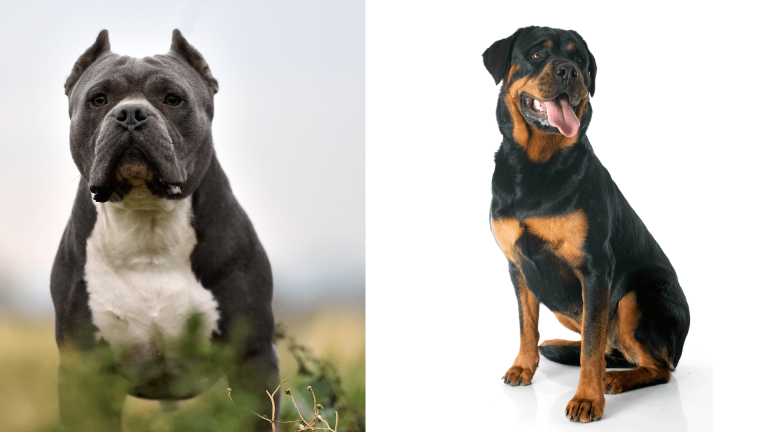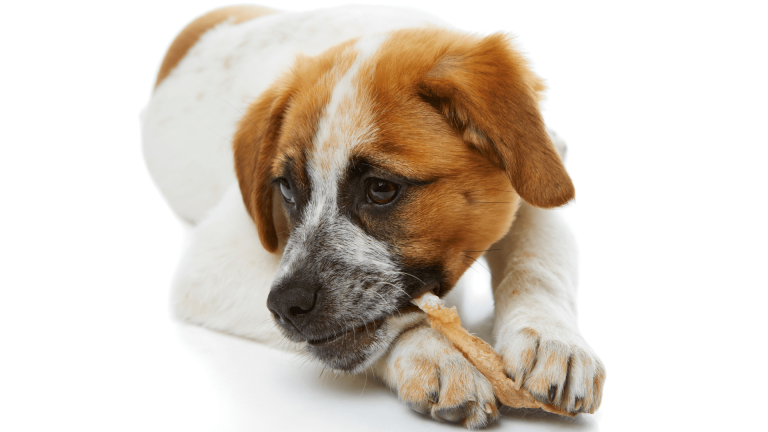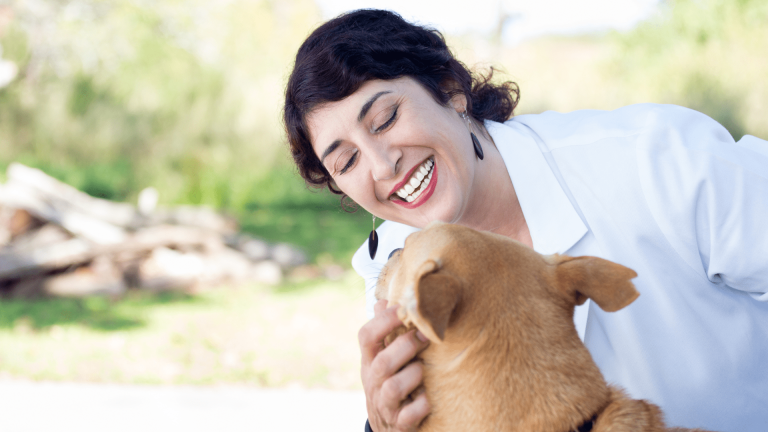How to Stop Dog Bites & 5 Main Reasons Dogs Bite
Contents
- 1 Why Do Dogs Bite?
- 2 How to Stop Dog Bites
- 3 Five Professional Training Advice to Stop a Dog From Attacking Humans
- 4 How To Stop Dog Biting And The Reasons Behind Dog Bites
- 5 How to Stop Dog Bites from Happening
- 6 How to Stop a Dog from Biting When Excited
- 7 Why Does My Dog Only Bite One Family Member?
- 8 Aren’t all bites the same?
- 9 Why Get a DOG? – Top 10 Reasons [Video]
Discover effective strategies on How to Stop Dog Bites. Learn essential tips to prevent aggressive behavior in dogs and create a safe environment for both pets and humans.
Both kids and adults should learn how to stay safe around dogs, but it’s crucial to realize that the dog’s owner is ultimately responsible for how the animal behaves. Fortunately, if you take the proper precautions, you can prevent your dog from biting someone. To keep everyone safe, responsible dog ownership and public awareness-raising are essential.
Why Do Dogs Bite?

Dogs typically bite people when they perceive some threat. Domesticated dogs nevertheless exhibit this innate instinct. Everyone who deals with dogs must be aware of the possible causes of this aggressive behavior.
- A dog may bite while defending itself, its territory, or a fellow canine. A mother dog will protect her young with ferocity.
- Even when playing, running away from a dog might result in a bite. Running away could set off herding behavior or predatory pursuit in some breeds, or the dog can think it’s amusing.
- Anyone who approaches a dog that is in a scared condition risks getting bitten. A circumstance like this could be something serious, like being abused or abandoned on the roadside, or something you would consider commonplace, like a loud noise.
- Injuries and illnesses are additional frequent causes. A dog may not even want to be approached or touched by its favorite people if it is uncomfortable or in pain.
How to Stop Dog Bites

As a dog owner, you must assume responsibility for training your dog and maintaining constant control over it. You regulate your dog’s behavior and serve as the first defense against dog attacks.
- Get your dog some socialization. Allow your dog to connect and meet a variety of individuals, including children, persons with disabilities, and senior citizens, in a peaceful, encouraging environment.
- Regularly expose your dog to various stimuli, including other dogs, loud noises, big machines, bicycles, and other things that can make them nervous. Keep the encounters positive when you begin this training with your dog at the earliest age possible.
- Pay attention to your dog and be on the lookout for any hostile situations. Before things get out of hand, you might have to get rid of your dog if you can’t control the circumstance or your dog’s behavior. · Avoid punishing your dog physically, violently, or aggressively. Before using aversives, such as shock collars and loud noises, to discipline undesirable behavior, choose positive reinforcement—praise and treats. Because dogs want to please their owners, rewarding positive behavior consistently is significantly more successful.
- Always keep your dog in a fenced-in area or on a leash. Before allowing your dog to run free in certain places, please get to know it well. Always keep your dog within sight.
- Always alert people if you believe or are aware that your dog is fearful or violent. Allowing your dog to approach people or other animals should only happen under strict control. Apply a muzzle if required.
Five Professional Training Advice to Stop a Dog From Attacking Humans
Taking swift action is critical if your dog tries to bite someone. There are many efficient ways to stop a dog from biting or nipping, from seeking professional assistance to employing a muzzle.
1. Spot The Signs Early On – How to Stop Dog Bites
Even the most well-mannered dogs occasionally bite people, so you must identify any early indications of aggression or annoyance.
Therefore, tackling dog bites depends on us knowing how to interact with our dogs safely and spot the early warning signs that they are in distress before a situation escalates.
2. Consider Using A Muzzle – How to Stop Dog Bites
If you are worried about heading out on a walk with your dog, it could be worth considering a harness or muzzle — great for restraining your dog’s ability to bite, chew, and bark. While a muzzle should not use in place of training, it will prevent your dog from being able to grind (or eat things they shouldn’t on a walk).
“If you’re concerned about your dog in public, always keep them on a lead and consider muzzling,” adds the Dogs Trust.
3. Pay Close Attention To Your Dog’s Behavior – How to Stop Dog Bites
You can notice the signs of aggression in your dog by closely observing your dog’s behavior. That will enable you to exert more control and determine when to escalate the situation, regardless of whether the trigger is being around another dog or feeling hungry.
The best advice is to warn others if your dog is becoming more aggressive constantly. Never let your dog approach strangers; always take him outside on a leash.
4. Head To Your Vet – How to Stop Dog Bites
It is best to seek professional guidance if your dog has started biting people more frequently; they will help you control those aggressive inclinations.
The Dogs Trust adds, “If you see any changes in your dog’s behavior, it’s worth visiting your vet, who can check for any underlying issues and aid with recommending you to a skilled behaviorist.
5. Take Part In Training – How to Stop Dog Bites
A hazardous dog bite. It is best to participate in additional training, not just for people but also for the dog. Dog School, a program offered by Dogs Trust, offers rewarding, enjoyable training to dog owners. These sessions assist owners in interpreting their dog’s behavior and teach them coping mechanisms that will help them adjust to life at home and deal with everyday situations. We can help individuals develop a stronger bond with their dogs and experience fewer behavioral problems if we allow them to discover subtly expressed ways dogs communicate with us.
How To Stop Dog Biting And The Reasons Behind Dog Bites
5 Main Reasons Dogs Bite

In the United States, four and a half million people wear bitten by dogs yearly, and one in five need medical attention for their wounds. Children make up half of those who suffer damage and are the most common victims. Children are far more prone than adults to suffer severe injuries from dog bites because of their small stature and lack of knowledge about how to behave around dogs. The majority of dog bites happen while people are engaging with known dogs. Thus it’s essential to teach families and their kids how to prevent dog bites. It’s crucial to realize that all dogs have the potential to bite and that by being aware of the typical causes of dog bites,
Possession of a Dog May Lead to Dog Bites Protection of property is a common concern, and in this context, “property” can refer to anything from a toy, food, territory, or even a person. The worst offenders tend to be guard dogs and herding breeds. However, any dog can exhibit this behavior. To reduce this form of possessive behavior, start training early. Teaching the order to “Leave it” effectively reduces toy hostility. Educating your dog to wait while you put their food down can prevent food violence. Train them to sit or lie down, take their food out, and replace it. Approach the food bowl and occasionally add rewards to the food to help the animals realize it’s okay to approach it. Instruct kids to avoid dogs enjoying a treat like a bone or eating one.
1. Dog Fear Can Cause Dog Bites
Fear typically folds in unknown settings or when dealing with strangers like veterinarians and postal employees. Never pet a strange dog; instruct your kids to do the same. Teach kids never to sneak up on a dog or harass a sleeping dog because fear bites can happen when a dog is startled at home. Early socialization is crucial to reduce the possibility of a dog acquiring phobias by exposing the pup to various people, animals, and environments. Make your initial visit to the veterinarian, for instance, more of a social outing to get a sense of the facility and meet the personnel. Put some snacks and a message requesting that your postal worker give your puppy a treat in the mailbox
2. Dog Pain Can Cause Dog Bites
Even the kindest dogs can bite out of pain. Keep your kids away from the injured regions and handle the dog gently if your dog has hip dysplasia, severe otitis, or any other persistent injury. Consider pain as a potential cause if your dog suddenly starts being irritable and make an appointment with your regular veterinarian for a physical if this happens
3. Instincts Can Cause Dog Bites
Even the best-trained dogs have the potential to bite when they have puppies. Regard a bitch that has lately given birth with awareness and respect. Children should warn not to approach a young puppy near its mother, and you should exercise caution when handling puppies. Make sure the mother and puppies have a quiet location where they can feel secure.
4. Prey Drive Can Cause Dog Bites
Running or cycling past a dog can sometimes set off this tendency, which might result in a chase. Whether jogging or cycling, be mindful of your surroundings and avoid crossing paths with roaming dogs. The best action is to stop moving and stand tall, confronting the dog if it does start chasing you. Be mindful of the dog, but avoid making eye contact because the dog can interpret that as challenging. They may approach you and give you a smell, but they will ultimately become bored with you and move on to discover something else. Curl up in a ball and cover your face, hands, and neck if a dog knocks you over.
5. Dog Bite Warning Signs
You will better equip to prevent these scenarios if you know the typical causes of dog bites. A careful observer can use the behavior that precedes dog bites as a warning and then take action to calm the dog down if it is stressed or afraid. The fur along their back may stick up, their ears commonly pinned back, and you may be able to see the whites of their eyes. The dog’s yawning is a warning sign and an attempt to show off its teeth rather than appear carefree. Another blatant indication that a dog can bite is non-social, “stand-offish” behavior, such as freezing in reaction to touch or gaze and returning with direct, intense eye contact.
How to Stop Dog Bites from Happening
Being a conscientious dog owner can help prevent dog bites at home with your dog. Having your dog spayed or neutered will help reduce the likelihood of bite-related behaviors if you do not intend to breed your dog. Regularly play and exercise with your dog to strengthen the link between people and animals and to burn off surplus energy that could otherwise focus on neurotic energy. However, stay away from combative sports like wrestling and tug of war because they might cause problems with dominance. If you train your dog correctly, it should be able to follow simple directions like sit, stay, come, and leave it. Don’t let your dog go loose in areas where it might endanger other people.
Refrain from overwhelming your dog when attempting to socialize, and introduce him to various people and settings. Get your immunizations up to date to prepare for the worst. Usually, a dog that bites someone without having had all of its vaccinations must euthanize. If your dog exhibits any aggressive behaviors, seek expert assistance from your veterinarian. If you have kids, teach them how to behave around dogs, what to look out for, and what to do in a dog attack.
How to Stop a Dog from Biting When Excited
An adult dog biting your hands while aroused is much more frightening than a puppy chewing at your fingers. Your dog may be biting you out of boredom, in an attempt to relax, or perhaps because they believe it makes you look good. Fortunately, there are training techniques you may employ to stop your dog from biting, regardless of the cause. In this post, we’ll provide you with the best training advice backed by professional advice so you can educate your dog not to attack you or other people.
1. Give Your Dog a Command
Encourage your dog to concentrate on a command to cease biting. Tell your dog to “sit,” “stay,” or “leave it” if it bites you or another person. Reward them for good behavior by giving them a treat or a toy when they obey your instructions.
- Dogs who are overstimulated and excited frequently bite. They might become calm enough to quit biting if you divert their attention. If your dog is still a puppy, teach them the fundamental commands so they can obey you.
2. Offer Your Dog a Chew Toy
Turn your dog’s chewing attention toward a toy or other constructive object. Your dog may be biting to calm themselves down or because stressed out. In that situation, a soft chew toy is an excellent substitute for your hand. Step calmly away when your dog bites you, and then give a chew toy. Over time, learn it’s better to bite toys than you.
- Teaching your dog takes time; you might have to keep presenting them with chew toys before they mentally realize the link.
3. Offer Your Dog a Treat for Good Behavior
Treats that provide positive reinforcement teach your dog the proper behavior. Give your dog pleasure as a reward if you observe that they aren’t biting or if they stop biting when you tell them. It will not only deepen your bond with each other but also teach your dog that not grinding is a good thing.
- Positive reinforcement generally works better with dogs than negative reinforcement since it teaches your dog what to do rather than terrifying it into submission.
Why Does My Dog Only Bite One Family Member?

There are a few reasons your dog might exclusively bite one family member. The dog may not trust that member of the family. For example, it can result from a previous incident in which the person was violent or cruel to the dog. Another option is that the family member is not interacting with and socializing with the dog appropriately. The dog may become agitated as a result of this anxiety and dread. Getting advice from a qualified trainer or behaviorist is best if you still determine the reason behind your dog’s behavior. They can assist you in selecting the problem and offer solutions.
Aren’t all bites the same?

Even though all bites should take seriously, the situation and decisions the dog made during the incident may provide clues as to the alternatives the dog explored before acting aggressively. Most dogs can generally manage how hard and how long they bite.
“Dogs who use violence to alter the course of a situation are rarely healed.
Some bites are prevented and may not leave any skin traces. Some edges may cause the skin to bruise, squeeze, or indent without causing bleeding. More severe bites can result in skin breakdown, puncture wounds that are deep or superficial, many punctures, or tearing or shearing injuries. Certain canines’ edges have the potential to break bones. Some dogs bite once and back off, while others repeatedly bite within the same episode. When provoked or when they are nearby, some dogs bite; other dogs rush from across the room.
Why Get a DOG? – Top 10 Reasons [Video]
Please share this “ How to Stop Dog Bites & 5 Main Reasons Dogs Bite ” article with your friends.
Let’s meet on the next article.
Until You can read: Top 15 Most Dangerous Dog Breeds




